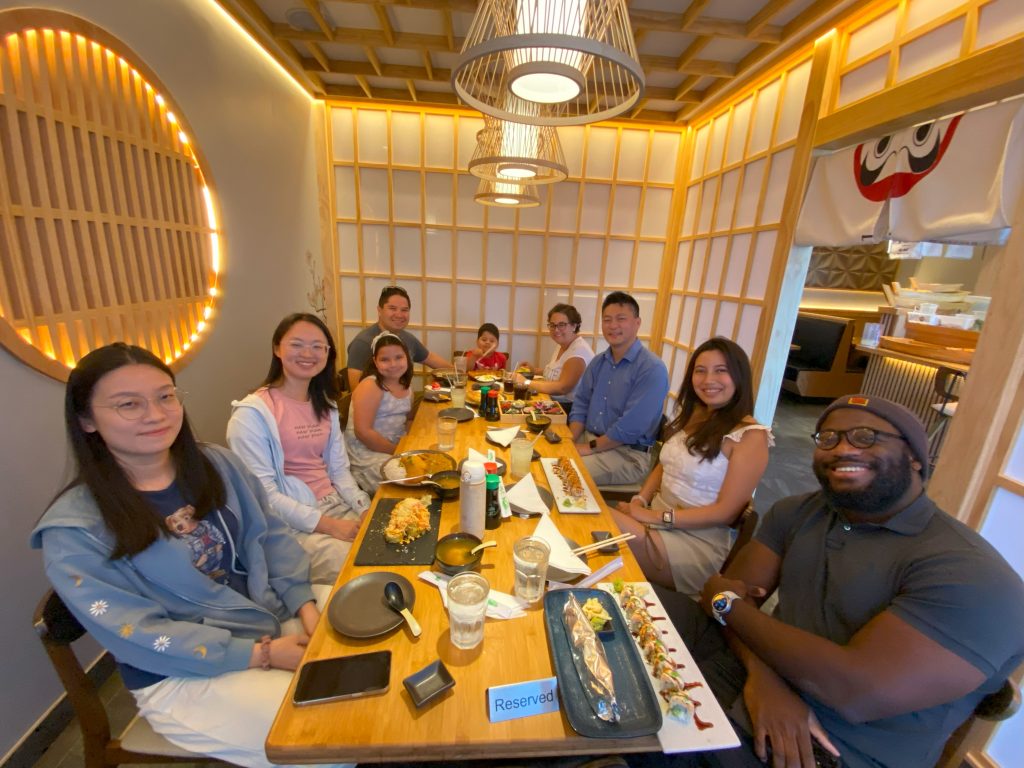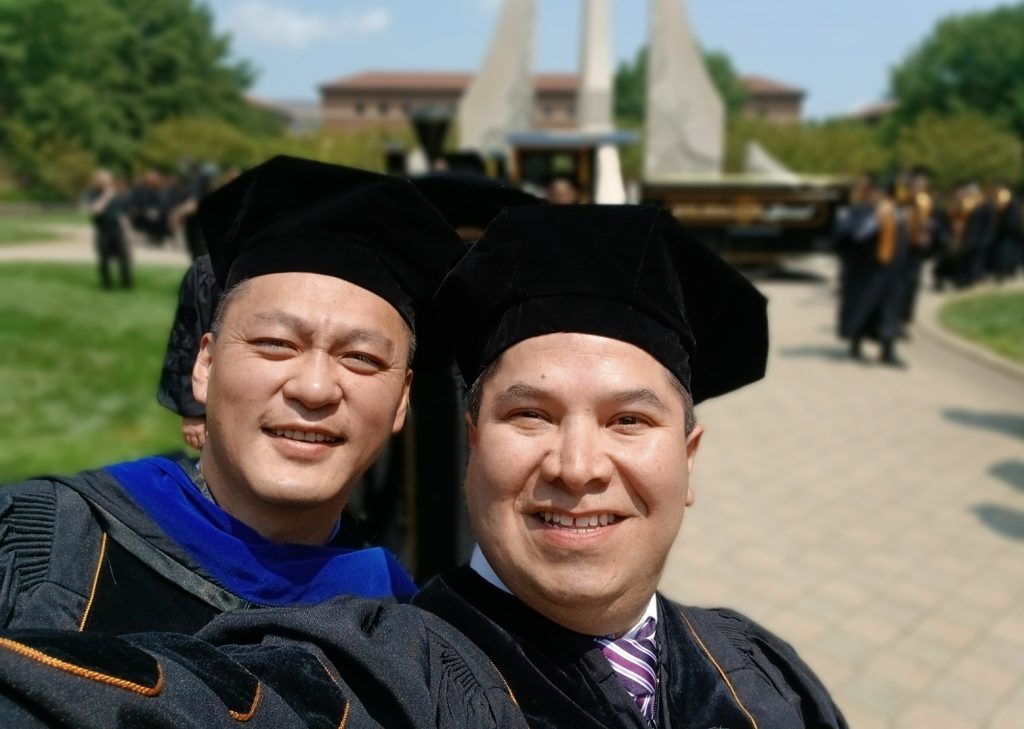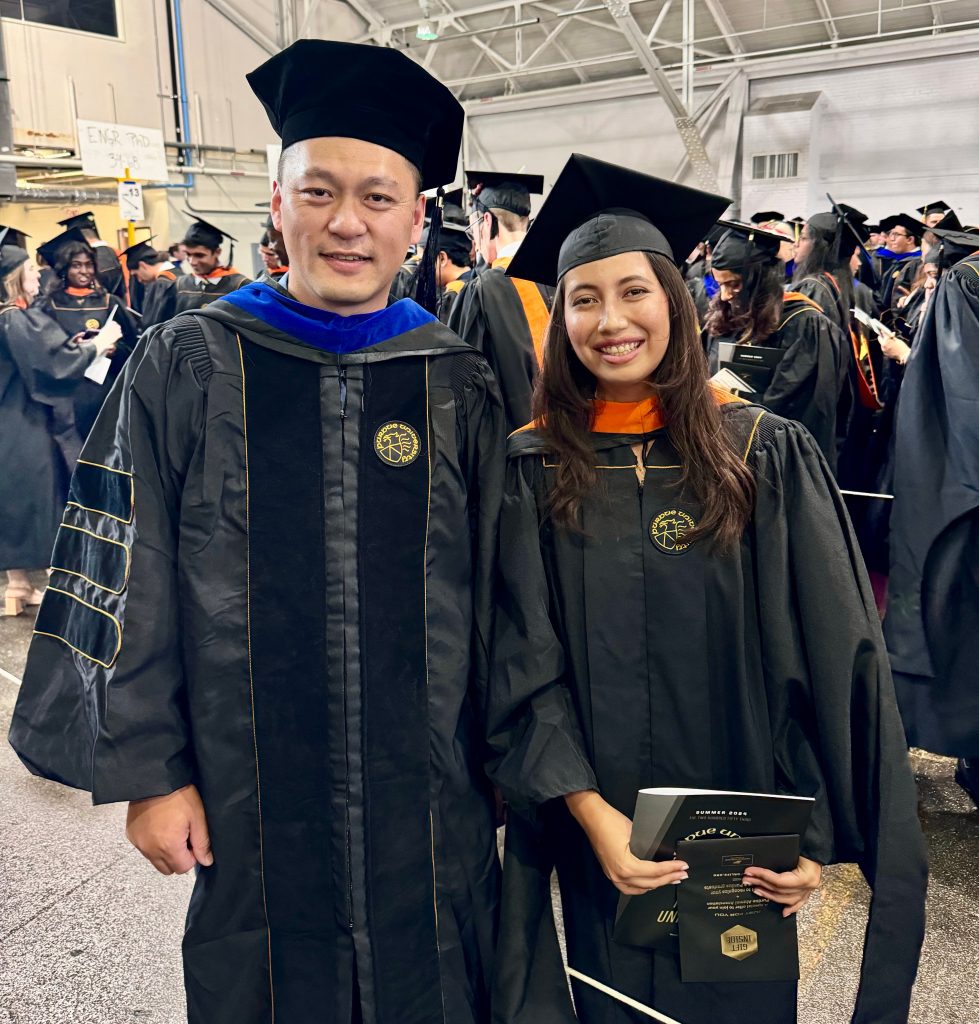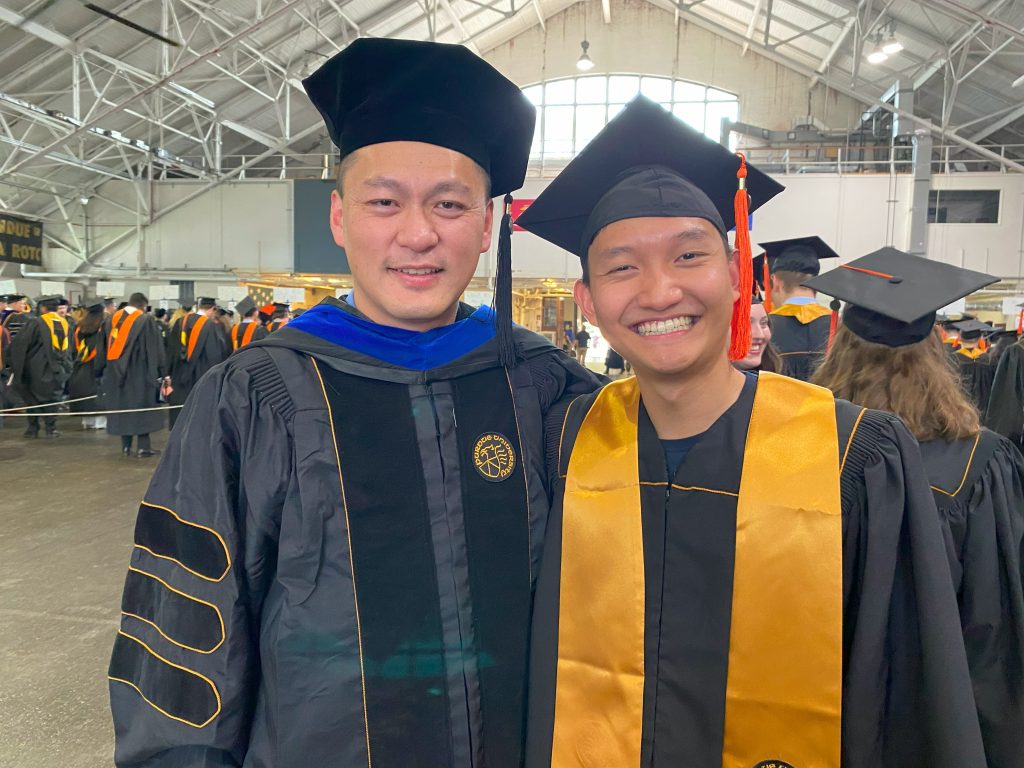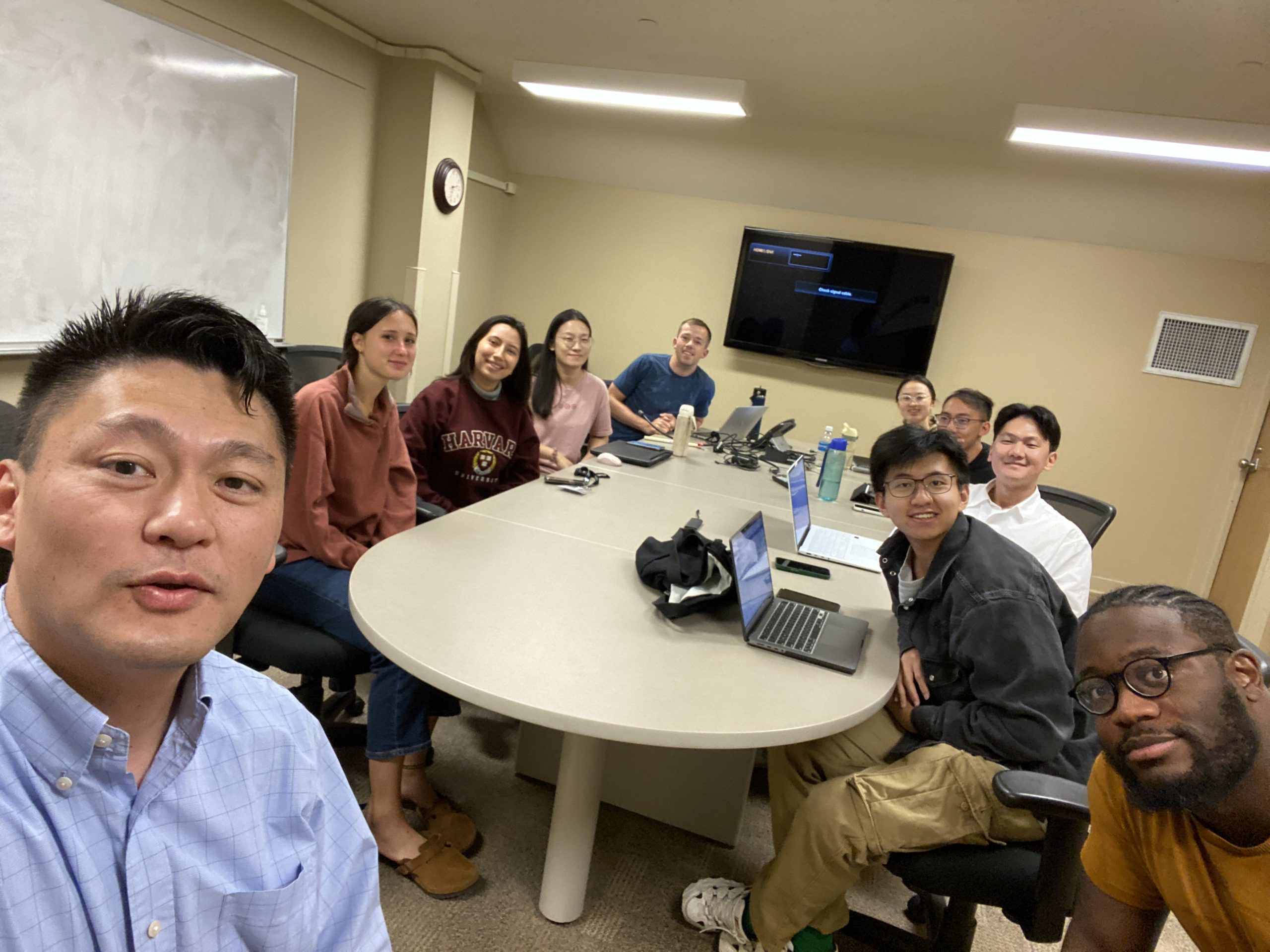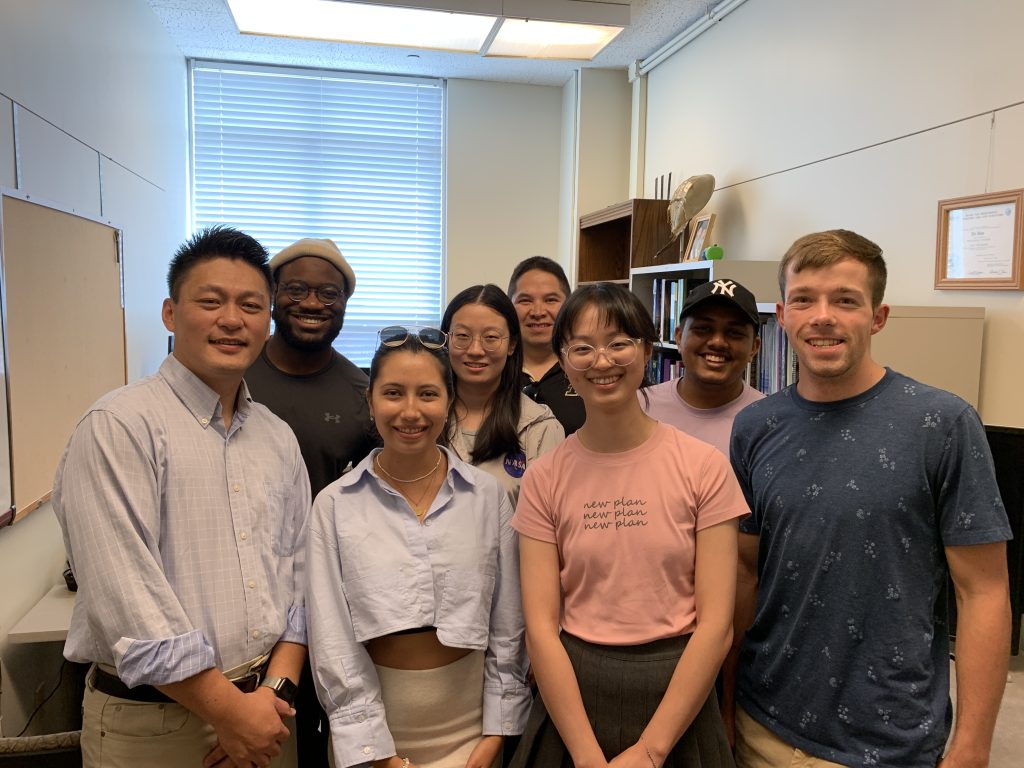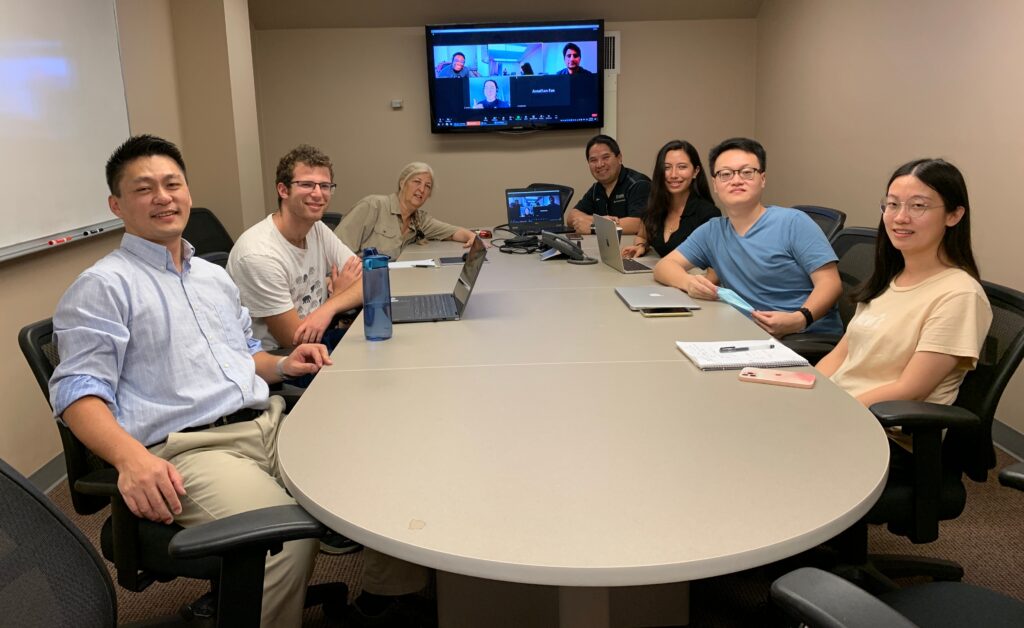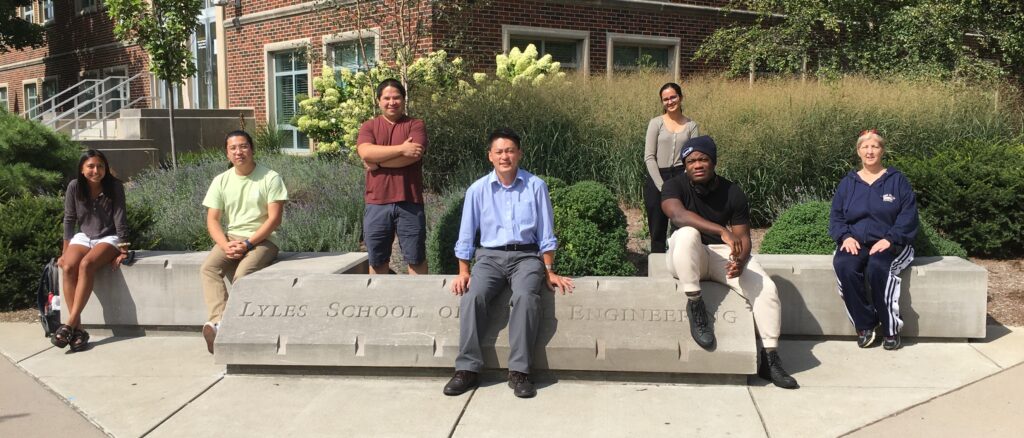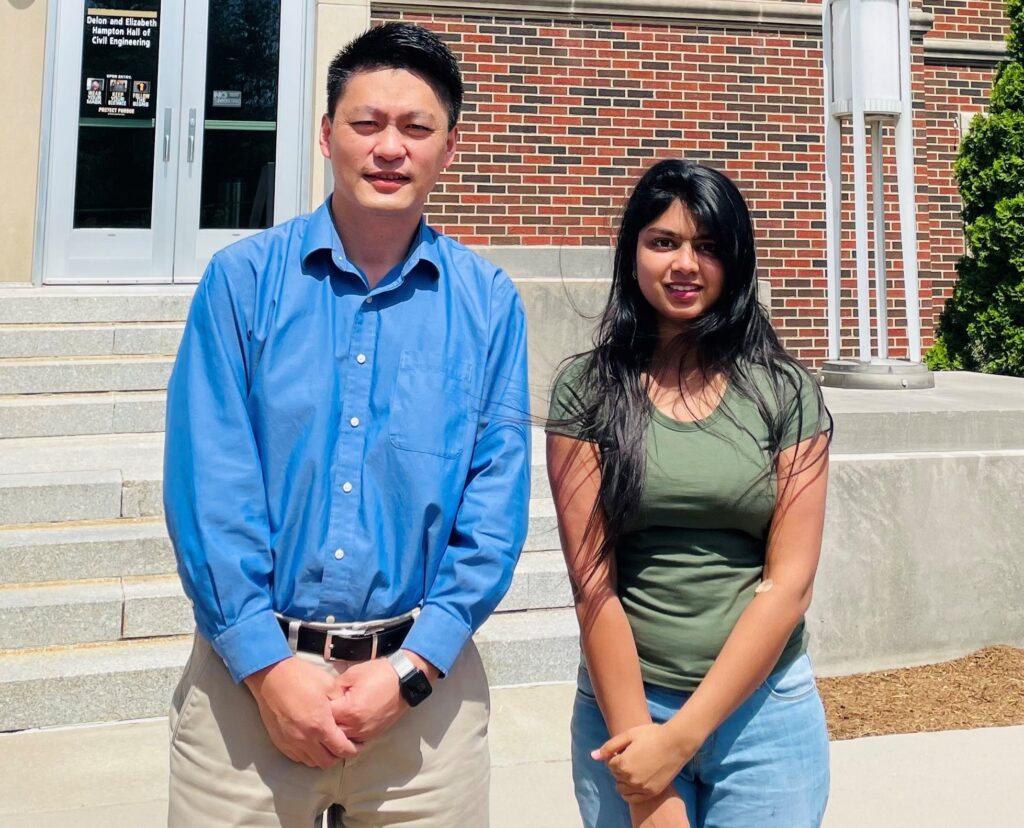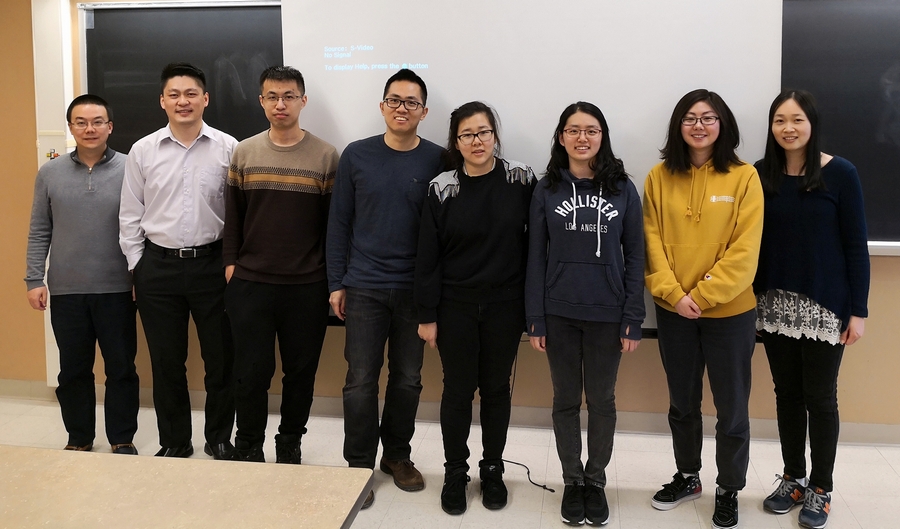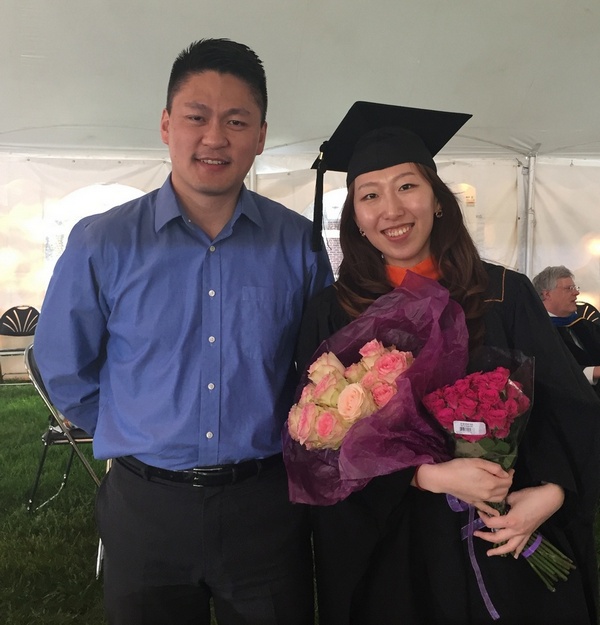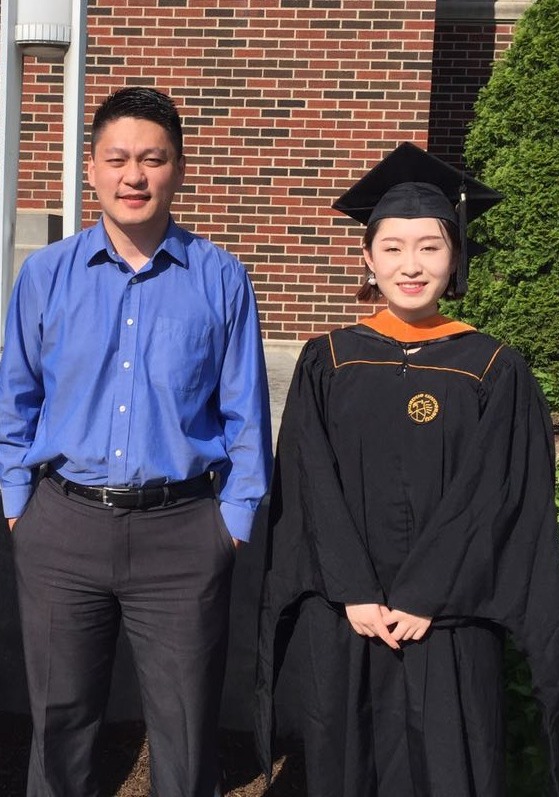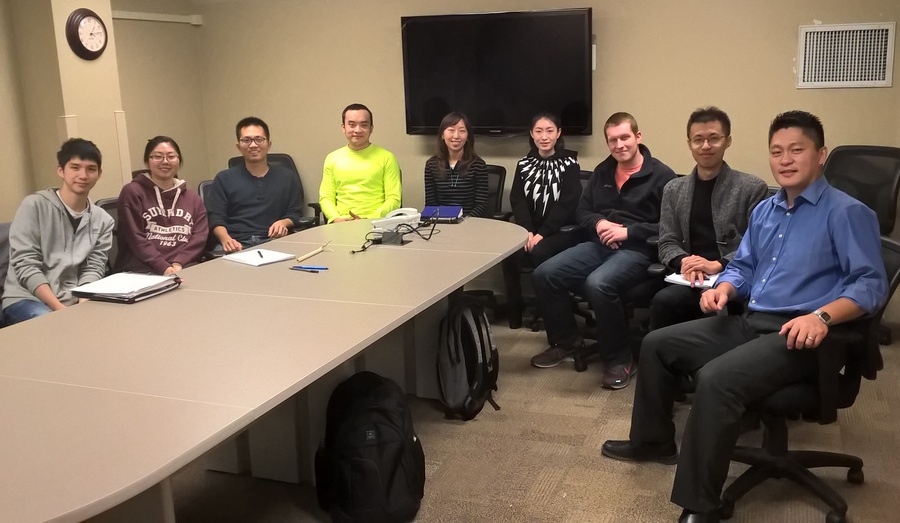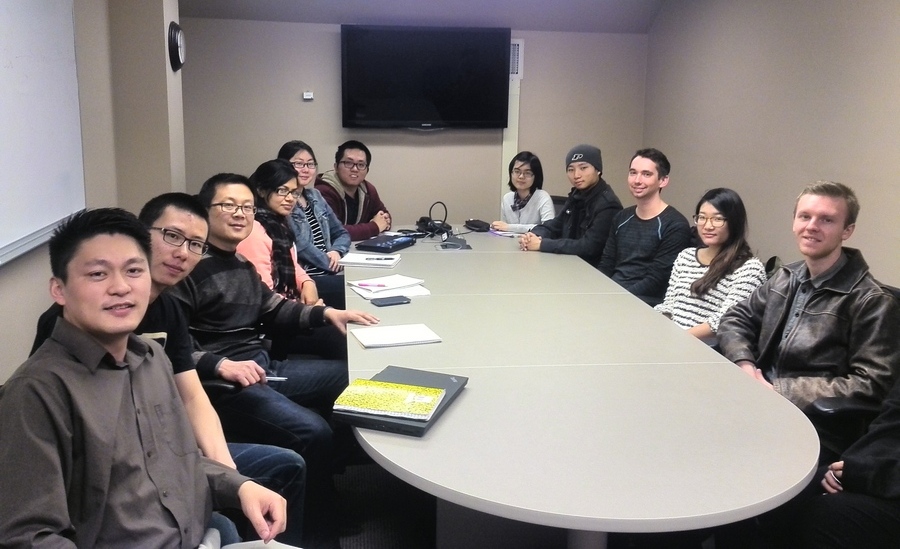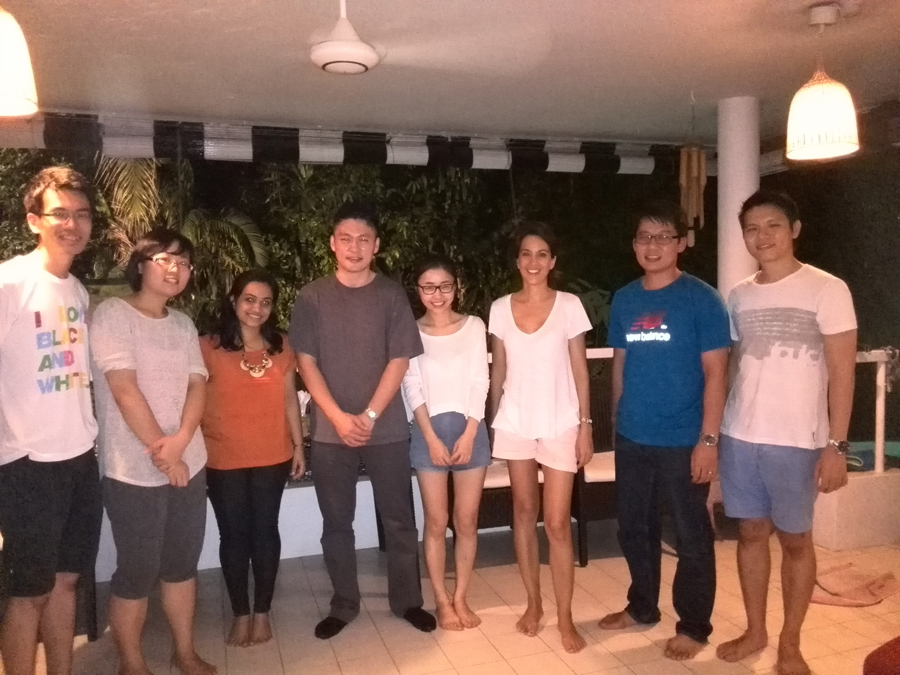Author: zhouzhi98
AEESP Conference – June 2017
We had a great conference at Ann Arbor, and also enjoyed the visit to the Henry Ford Museum of American Innovation very much.
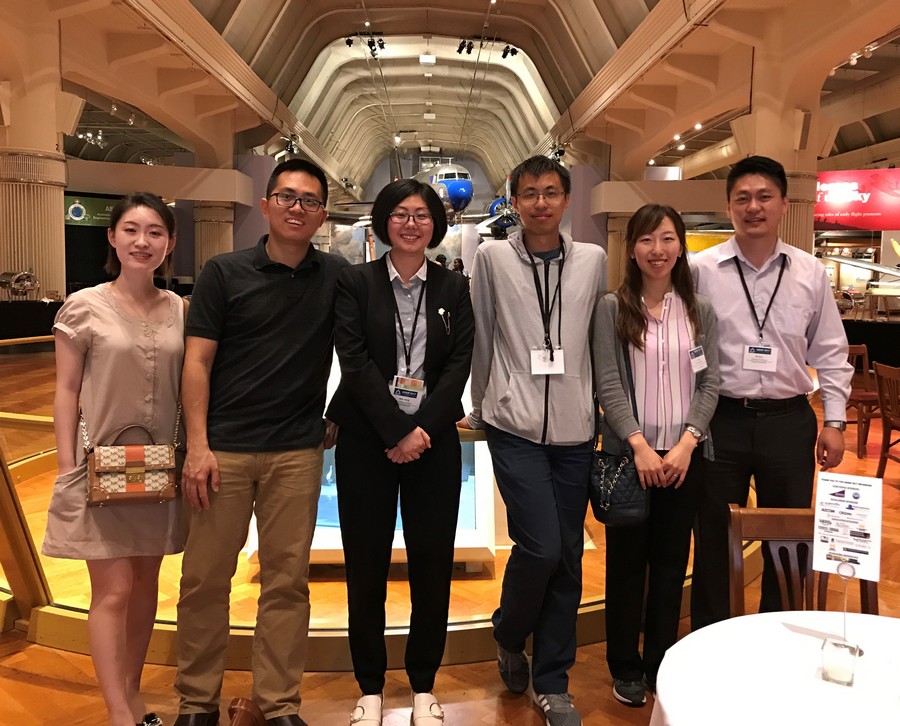 .
.
Congratulations on the 2016 awards!
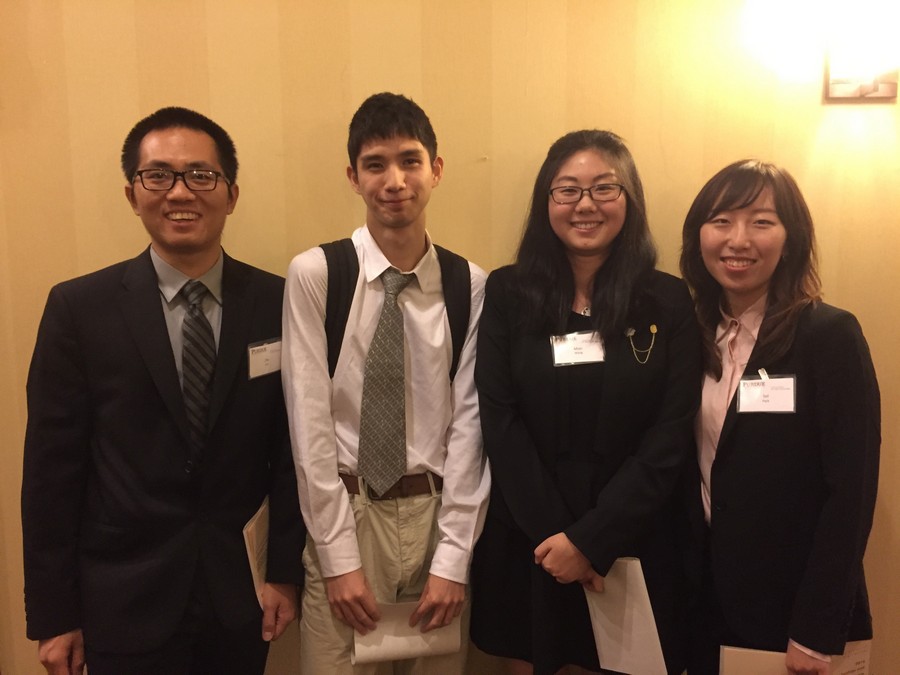
Congratulations Zhe, Tianlong, Mian, and Sol!
Think Small!
There is another sad news that Dr. Abigail Salyers, former ASM President, has passed away earlier this month. It’s a forever lost to the scientific community. She is well known for her work in pathogenesis and antibiotic resistance. Her book “Revenge of the Microbe” is an enjoyable piece of work for the general public on the topics of antibiotic resistance. I got her signature for the book after one of her talks a few years ago, as shown below. To deal with the big picture on public health, we must think small.
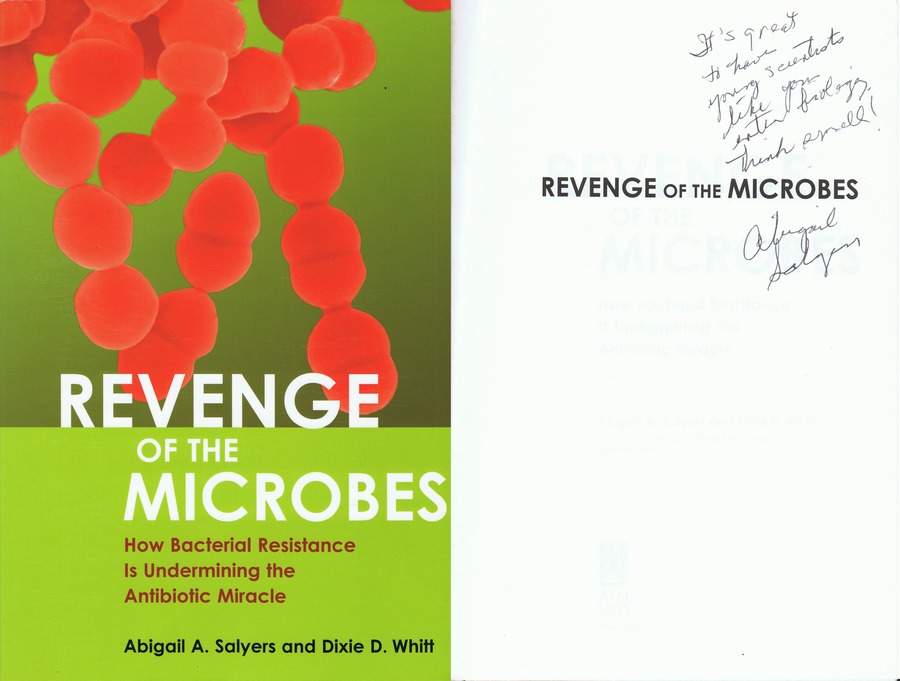
Sanjay’s Surprise Farewell Party – Oct. 2013
Sanjay, thanks for bearing with us for the practical joke, we will miss you!
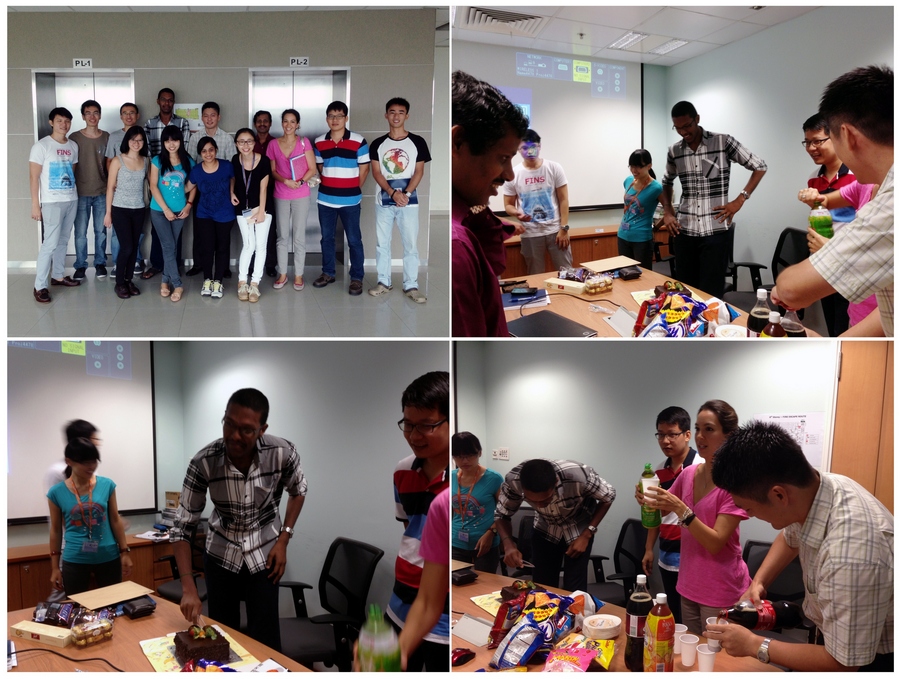
Happy Birthday, Xinzhu!
Best wishes to Xinzhu, our senior sister apprentice, for a happy and prosperous birthday!
Check out our wishes in youtube (http://youtu.be/z5egD050ctQ):
Dr. Carl R. Woese, who discovered the third domain of life, passed away in December 2012
 Dr. Carl R. Woese, one of the greatest scientists in our time, passed away on December 30, 2012 at the age of 84.
Dr. Carl R. Woese, one of the greatest scientists in our time, passed away on December 30, 2012 at the age of 84.
Dr. Woese is probably the greatest biologist since Darwin. He revolutionized our understanding of life by the discovery of the third domain of life – Archaea. He spent many years of laborious work in comparing the sequences of ribosomal RNAs and finally realized Archaea and Bacteria, although morphologically similar, are essentially different. He assembled the universal phylogenetic tree with three domains (Bacteria, Archaea, Eukarya). When he first reported his results in 1977, he faced sharp criticism from many other biologists, but now the phylogenetic tree is an essential content of any modern microbiology textbook. The relationship of among these three domains is of great importance to help us understand how organisms evolve from the universal ancestor. Contrary to molecular reductionism, which dissects microorganisms into parts and focuses only on specific genes, he pulled us out of the popular reductionist view of the world and pointed the direction among complex biological phenomena to answer the fundamental question: “What is life?” Although such a question is still unanswered, his creativity and wisdom has greatly helped us move closer to finding the answer. His death is a great loss to the scientific community.
I still remember sitting in his class ten years ago. He did not bring any lecture notes, and instead was just sitting in the front and talking about the theories and comments on molecular genetics. At the age of 74, he was exceptionally energetic and had no plans for retirement. Frankly speaking, I could only understand a small fraction of what he was talking about. But he was very nice to students. As long as the student in his class submits the final report, he will get an A. Earlier that year, he won the Crafoord Prize by the Royal Swedish Academy of Sciences, the same agency that also awards Nobel prizes. I heard that his work did not fit into the existing categories of Nobel prizes, so the Royal Swedish Academy of Sciences acknowledged his accomplishments with the Crafoord Prize. But I guess that he didn’t care anyway, because the most joyful moment to a great scientist is to find things out, as mentioned in his own words, “in the 1970s, the golden age.”
About 2300 years ago, a great Chinese philosopher, Zhuangzi, faced the death of his wife calmly and said that life and death are like seasons and therefore we should let natural processes run their course. Although I don’t know if Dr. Woese agrees with it or not, I am sure that he has a cool altitude on the emergence and disappearance of life on earth as an evolutionary biologist. Even though he has left us, Dr. Woese’s wisdom will continue to inspire us for many future generations.
R.I.P., Dr. Woese.
How much water is there on, in, and above the Earth?
If all earth’s water is put into a bubble, then it will look like this:

Check out this USGS article on how much water is available on, in, and above the Earth.
ESE Symposium Awards
Congratulations to Yuanyan for winning the Excellence Award and Steve winning the Merit Award in the ESE Symposium!

Why engineers need to study microbiology?
It is a rewarding and fulfilling experience to teach microbiology to undergraduate engineering students. However, some students may find it difficult to understand microbiology concepts. Lack of relevant background knowledge may contribute to the learning difficulty, while not being able to see the links between engineering and microbiology is a more important, although not obvious, reason for such a difficulty. I have to admit that it is not easy to see the link between protein synthesis and nitrogen removal in wastewater. But microbiological principles are essential for the success of environmental engineers. As a professional engineer who had previously worked in an engineering consulting firm, I can’t overemphasize the importance of microbiology. If you consider the fact that more than 99% of secondary wastewater treatment systems in the world are biological wastewater treatment systems, then you may realize that microbiology is the key for the optimal performance of these systems. Some NASA scientists even use anaerobic digestion systems to treat wastewater in spacecrafts for exploring Mars. For me, it is more than normal to utilize anaerobic microorganisms for such a job, as microorganisms don’t need oxygen and oxygen can even kill them. These microorganisms just need electron donors and carbon sources, and will live happily thereafter. There were some efforts in the 70′s to use physical-chemical systems to treat wastewater in the States, but the results were far from satisfactory. So far biological wastewater treatment systems are still the most cost-effective systems to clean water, even though we still don’t fully understand how to best optimize these systems.
Apart from the above-mentioned reasons for environmental engineers, it is fun to learn something drastically different. If you haven’t taken any modules from Colleges of Science and Liberal Arts, then microbiology can give you a little bit of a flavor with ingredients of art, math, science, engineering, and even sociology. What’s even more interesting is that microbes are everywhere but they are not under our control! They are in us, they are on us, but we can do nothing about them for most of the time. We can kill them, but they will come back. Even before we develop our weapons, such as antibiotics, some of them developed antibiotic resistance back in 4,000,000 years ago. We share almost the same mechanisms with bacteria at the cell level, yet we still don’t know all their secrets. They have lived long time ago before we were born, and they will still be there after we die for many years. For them, we are just passerby. Isn’t it fun to learn a little more about our silent friends? Wouldn’t it be a luxury to see these beautiful creatures that have been there for 3.5 billion years?
Check our latest LinkedIn posts
Find some of our latest posts here.
